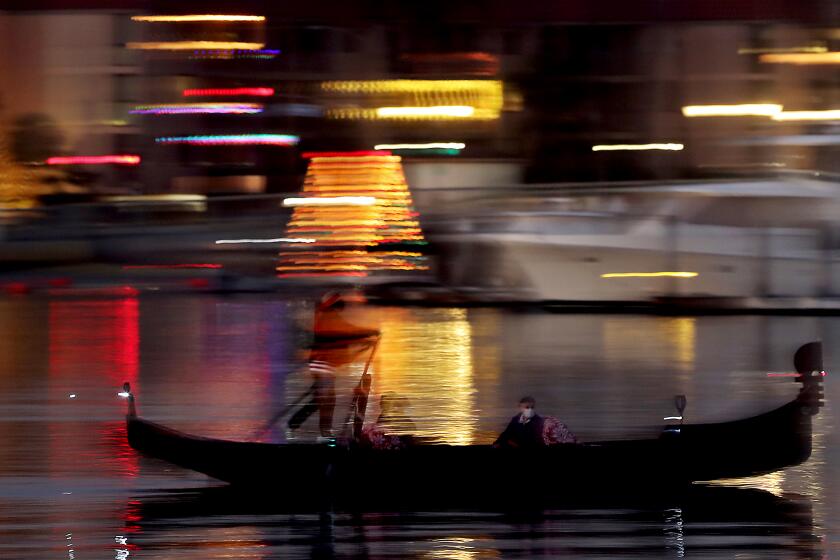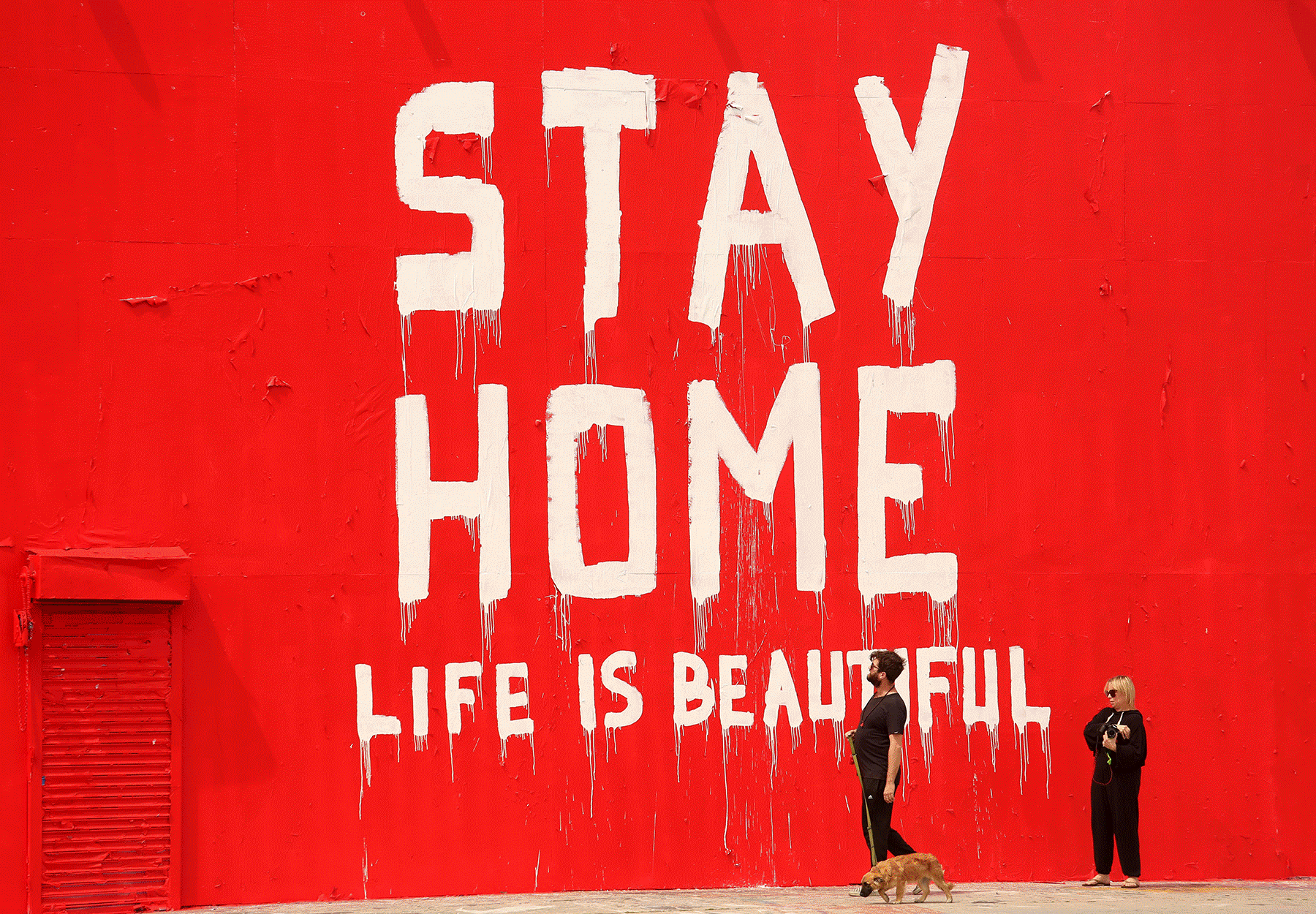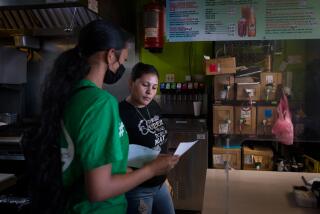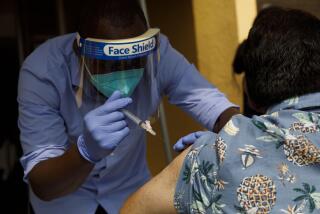COVID-19 hit Latinos hard. Now officials must build trust around vaccine in the community
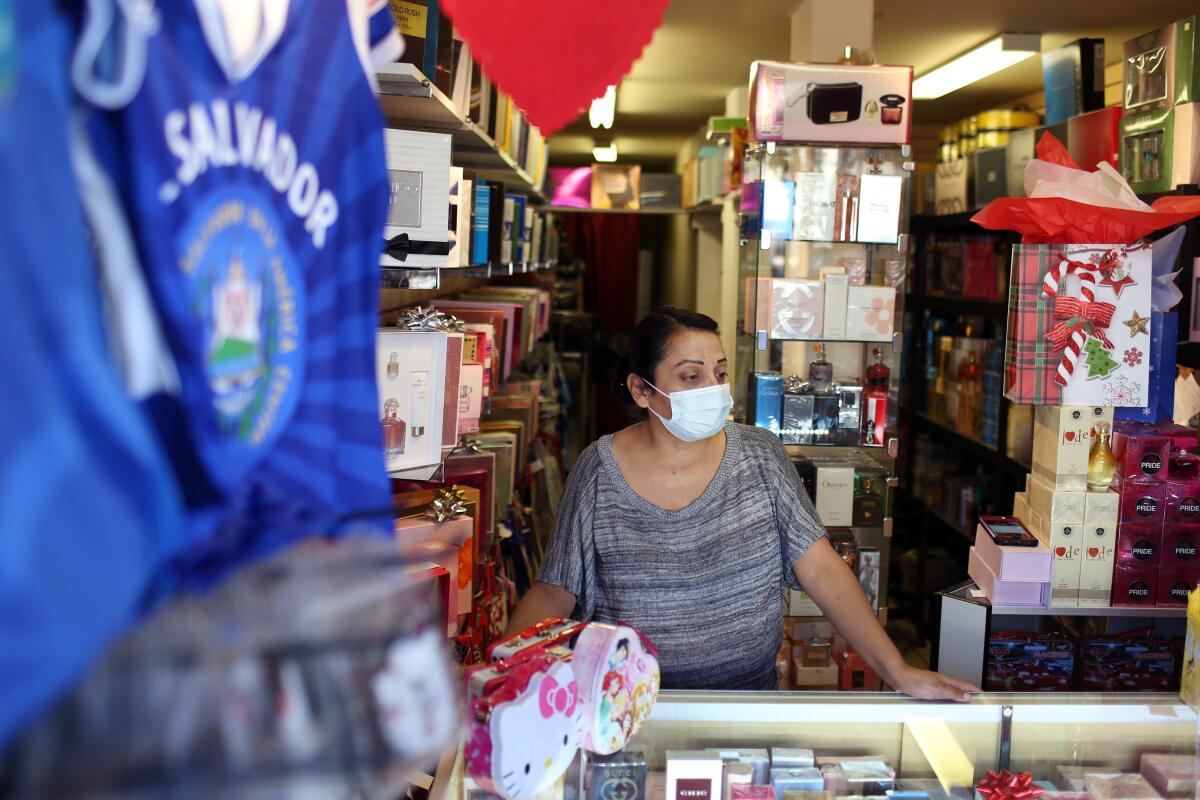
Silvia Orellana knows how serious COVID-19 is. She sees its destructive steps every time she looks outside her perfume shop in Huntington Park, where the foot traffic has dwindled to almost nothing.
The 45-year-old recently thought she had contracted the coronavirus, but it turned out to be the flu. Despite her fears — both personal and economic — she’s resolute on her feelings about a COVID vaccine: “Yo no me lo pondria.” “I wouldn’t get it.”
Three years ago, Orellana dealt with a fever, chills and pain in her bones after getting a flu shot. She doesn’t want to take chances on another vaccine.
It’s a sentiment echoed by Latinos up and down Pacific Boulevard, where cheery red and green holiday decorations contrast with shuttered storefronts. And it angers Berta Calderon, who works across the street from Orellana in her store, Los Cuatro Sabios. A friend she’s known for 25 years died of COVID-19 in June. Children in her catechism class lost parents. There are days her business barely makes $10 because of the unceasing pandemic.
In Calderon’s landscape of heartache and loss, every face is Latino, reflecting the warpath of a disease that has affected this group more than any other in California.
“It’s necessary that we get vaccinated,” the 65-year-old said. “I’m going to get it as soon as I can.”
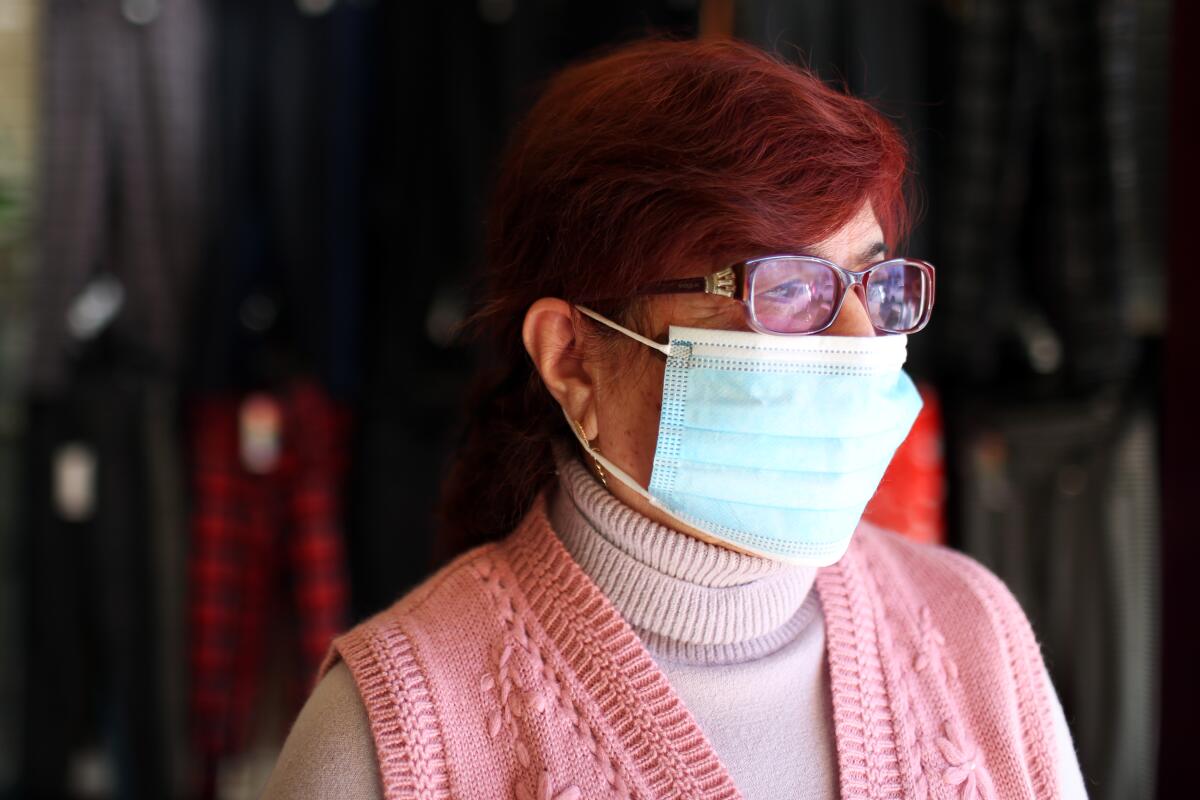
Dr. Anthony Fauci, the nation’s top infectious-disease expert, has warned that the pandemic will continue to disrupt lives unless the “overwhelming majority” of Americans get vaccinated. While the process of creating vaccines has happened with extraordinary speed, he said, it has not been “at the expense of safety and scientific integrity.”
But as states plan for vaccine distribution, an all-too-important question has arisen: How many people will take it? That question might prove especially pivotal for groups that have seen the highest casualty rates from COVID-19.
Gov. Gavin Newsom has announced a stay-at-home order affecting most of California.
“I’m concerned more about vaccines for different demographic groups that normally are reluctant to get vaccinated, like the minority communities,” Fauci said during a Facebook livestream last week.
In California, the plight of Latino residents looms especially large. They make up about 40% of the state’s population, but represent 58% of its COVID cases and 48% of its deaths from the virus.
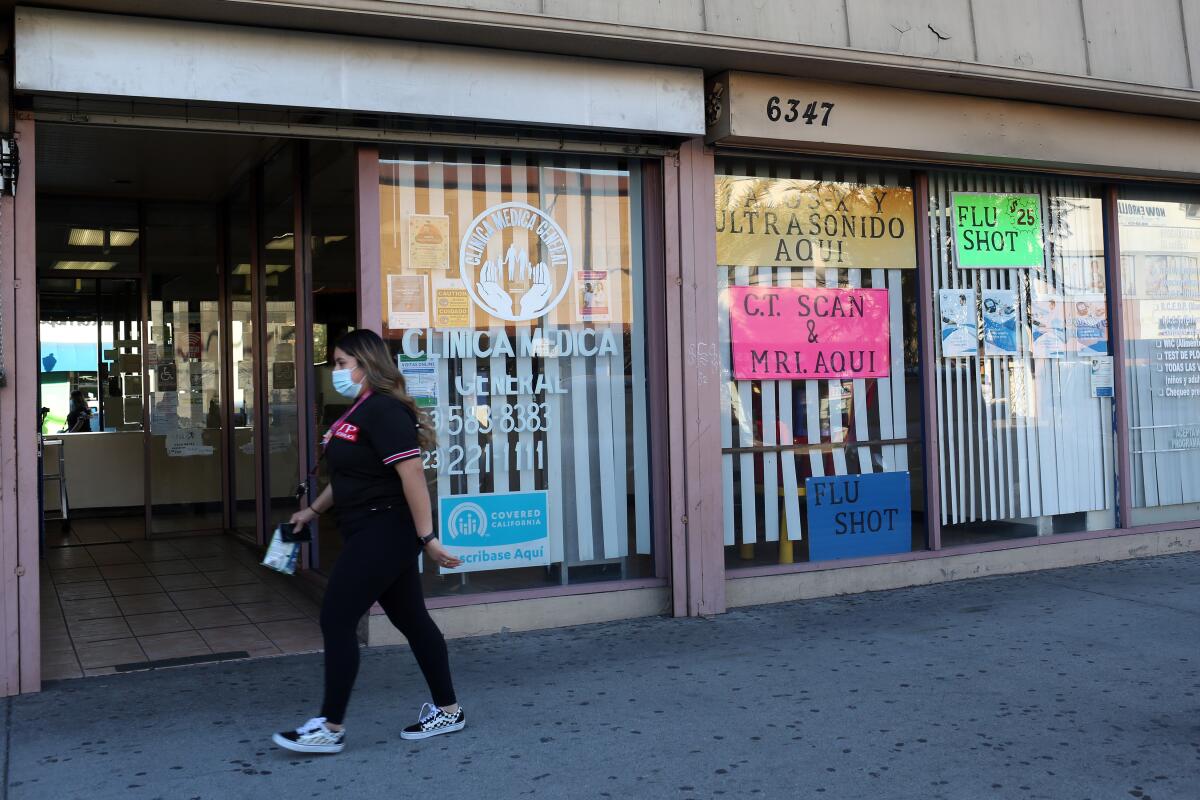
They also account for a disproportionate number of “essential workers,” who are more exposed to the coronavirus, which has swept through fields, meatpacking plants and construction sites.
In L.A. County, Latino residents are now becoming infected with the virus at more than double the rate of white residents, data show.
California’s fate, to no small degree, rests on how Latino residents fare during and after this pandemic.
Around half of the state’s Latino population said they would probably or definitely take a COVID vaccine, according to an October survey by the Public Policy Institute of California. Fewer than 30% of Black people said the same. Experts say vaccine hesitancy will likely decrease as more people get it. (Nationally, a higher percentage of the Latino population than the white one said they would get vaccinated — though not in California).
Photos look back at 2020’s wild ride in the Golden State.
“In communities of color in particular, there is a real history of abuse by the medical system that creates a potentially higher level of skepticism. And yet that is the population that’s also at increased risk of COVID, and increased risk of getting very sick and dying,” said Dr. Robert Wachter, chair of the Department of Medicine at UC San Francisco.
“We don’t get back to normal as a society until 70% or so of the population is immune to the virus,” he said, “and you just can’t get to 70% unless a lot of people that are a little skeptical about it are convinced to take it.”
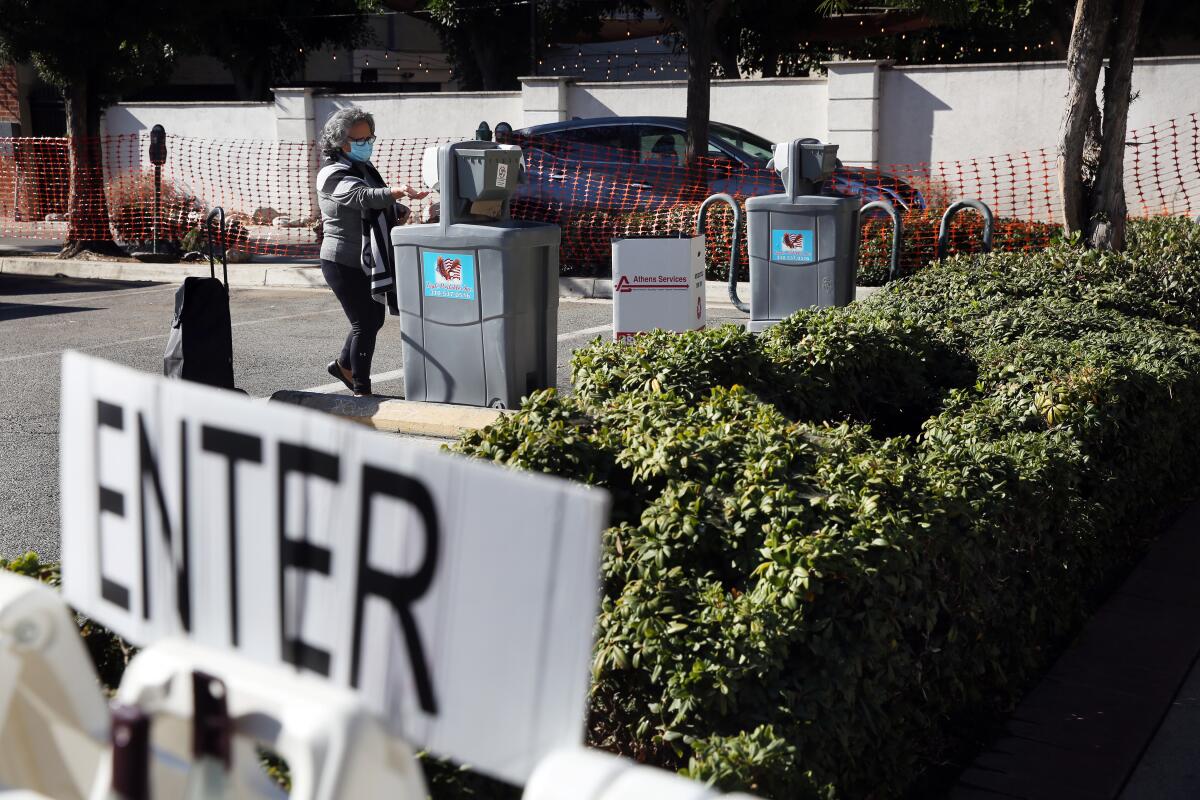
President-elect Joe Biden’s pick of California Atty. Gen. Xavier Becerra to be the next Health and Human Services secretary could help build trust within the Latino community. If confirmed, Becerra would be the first Latino to hold the office.
The health secretary oversees the Food and Drug Administration and the Centers for Disease Control and Prevention, two of the agencies at the forefront of the federal response to the COVID-19 pandemic.
On a recent Friday morning in Uptown Whittier, Adriana Gomez directed each shopper to a hand-washing station near the entrance to the farmers’ market. Vendors, many of them Latino, loaded tables with kettle corn, Mexican oregano and boxes of oranges, grapes and pomegranates.
Gomez, whose parents are high risk, plans on getting vaccinated. But her father-in-law, who believes that hospitals are only after his money, does not.
“Just because you decided, ‘I’m not gonna take the shot,’ you have to understand you can impact thousands. It’s a domino effect,” Gomez said. “We have to really think about, ‘how do we get it out to the people that it’s safe to take this, and that you have to for this to stop?’”
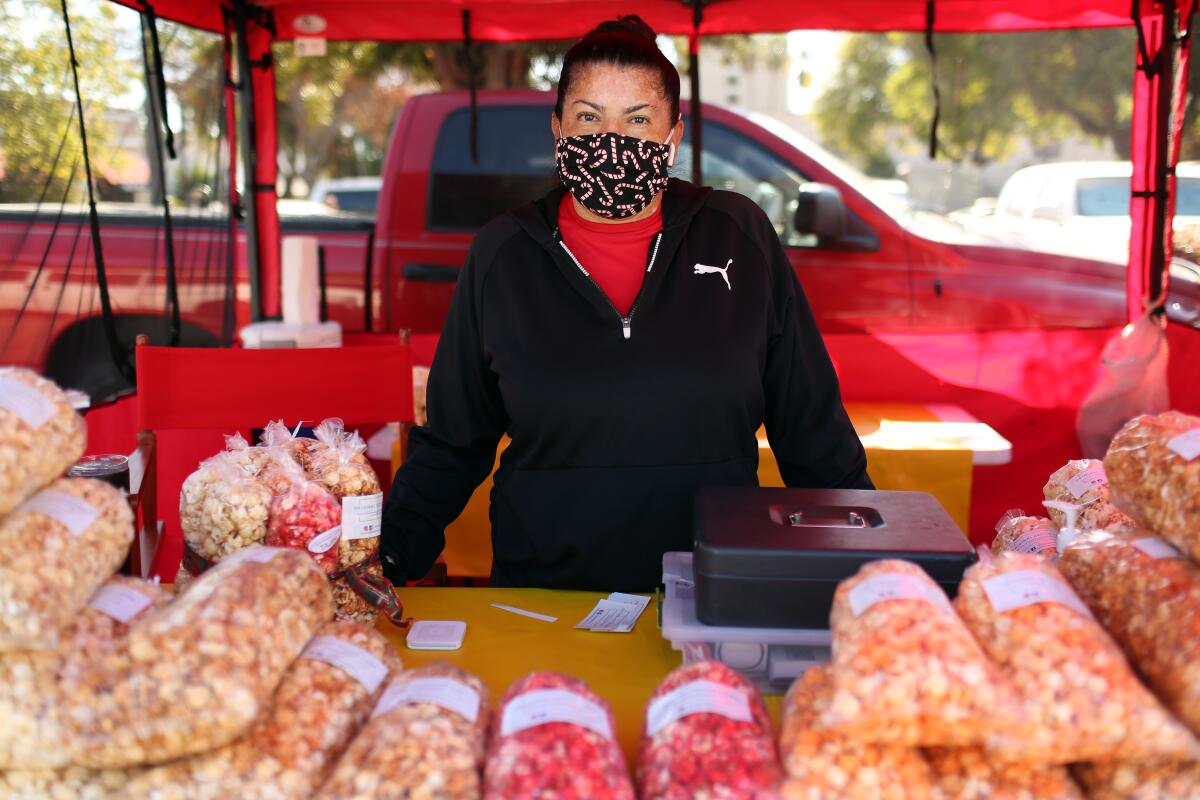
Magda Navarro, who was selling kettle corn under a red tent, said her parents aren’t opposed to the vaccine but that they wouldn’t rush to get it. Navarro, who wore a black candy cane mask, said she likely wouldn’t get vaccinated even if she saw good results for others.
“I’ve never taken the flu shot,” the 39-year-old said by way of explanation. “I hardly ever get sick.”
A couple of vendors over, Uriel Ibarra — who stood behind tables laden with dragon fruit, mandarins and grapes — was on the fence. The 36-year-old grew frustrated after his work week dropped from six days to three, but said he’d likely wait to see what the vaccine’s side effects were before getting it himself.
Wachter said he believes the number of people who ultimately get vaccinated “will be better than we fear” as people see their sport heroes, doctors and others do so.
“They are going to see that those people now feel much more comfortable going out and about and are living their life with less anxiety,” he said. “They may over time begin to see that those people are allowed on an airplane or allowed to go into a workplace. ... It’s not at all inconceivable that there will become places where you can go if you’ve been vaccinated and you can’t go if you’re not.”
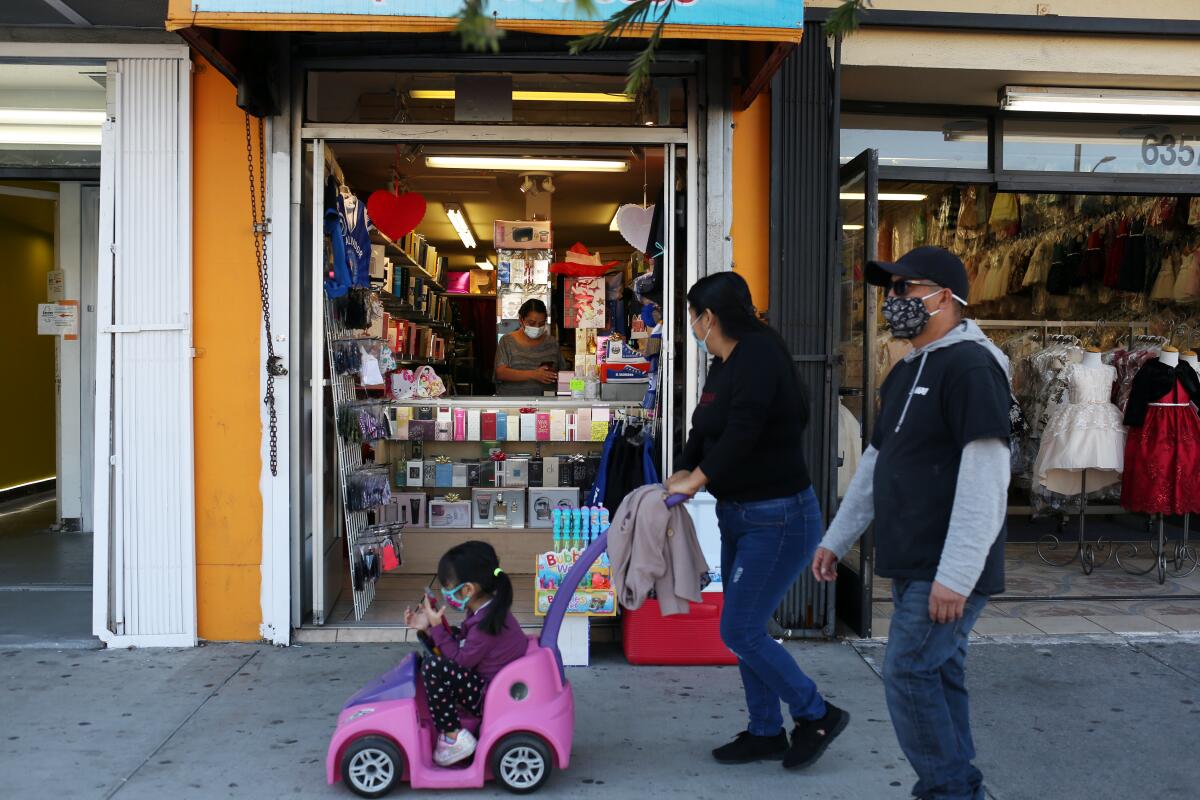
In the state’s interim COVID-19 vaccination plan — submitted to the CDC — the California Department of Public Health said that “extensive public and stakeholder engagement is already underway, with a focus on tailoring messages to key populations and vulnerable communities to ensure maximum vaccine acceptance and trust in public health and in the COVID-19 vaccine.”
The plan referenced partnering with community-based organizations, employers, public and private health plans and faith-based groups.
“It is going to take a while to build the trust that is needed for people to get the vaccine,” said Kiran Savage-Sangwan, executive director of the California Pan-Ethnic Health Network, a health advocacy organization. “And to do that, we are going to have to enlist our trusted community messengers ... to talk to people about what the vaccine is, how it works, how we’ve studied the safety and efficacy of the vaccine to provide people with real, trusted, scientifically based information about it.”
The COVID Collaborative, a coalition of experts in health, education and the economy, recently announced a public education campaign to convince people to get vaccinated.
A national poll conducted by the COVID Collaborative, NAACP, UnidosUS, and Langer Research found that 14% of Black people and 34% of Latinos trust that a vaccine will be safe. The report said efforts to promote uptake should “leverage voices from within the Latinx community” and reinforce the notion that taking the vaccine is “a responsibility that helps the Latinx community at large.”
Building trust and being “part of the solution” is what drove National City Mayor Alejandra Sotelo-Solis to enter the UC San Diego Health COVID-19 vaccine trial last month.
“As a Latina, as somebody who believes in science, believes in vaccines, I think it’s important to continue reaffirming that,” Sotelo-Solis said.” I think that I’m in this unique position to where I can say, ‘Look, I went through the process, and this is what you can expect.’”
Her decision to join the trial was met with skepticism by some of her relatives. They questioned why it had to be her.
Sotelo-Solis had a simple answer: “Why not me?”
More to Read
Sign up for Essential California
The most important California stories and recommendations in your inbox every morning.
You may occasionally receive promotional content from the Los Angeles Times.

